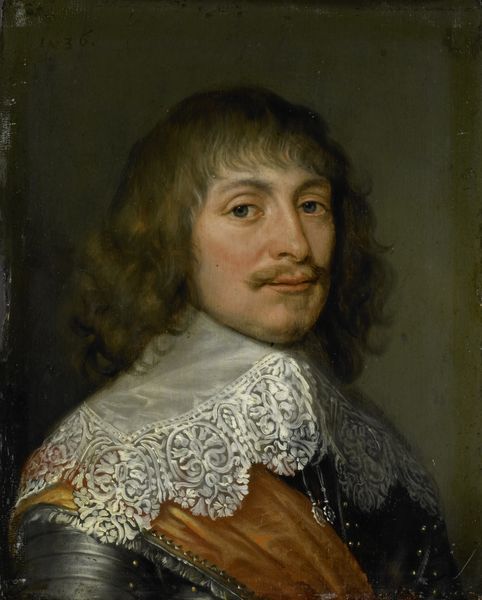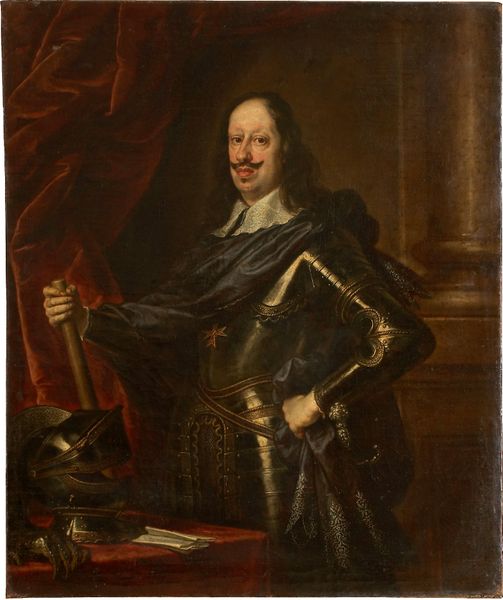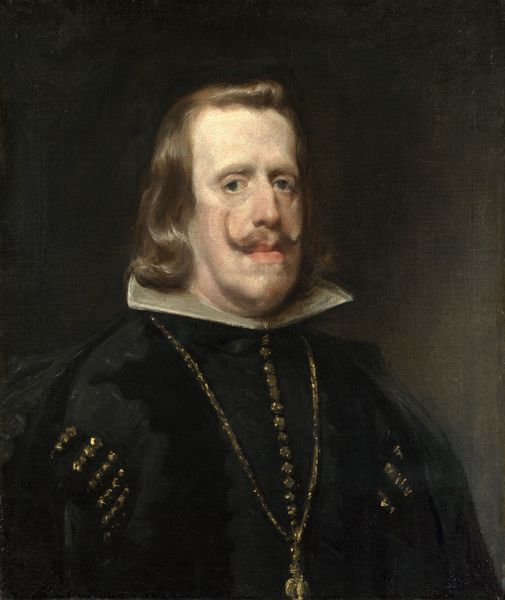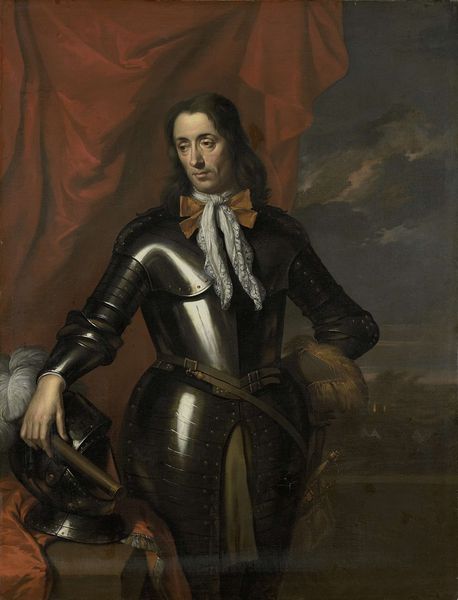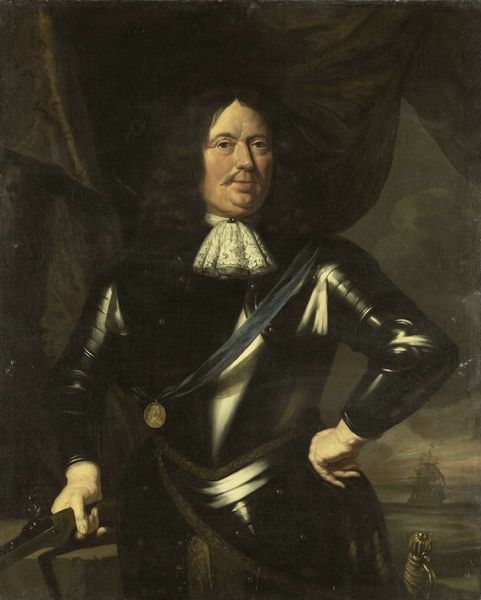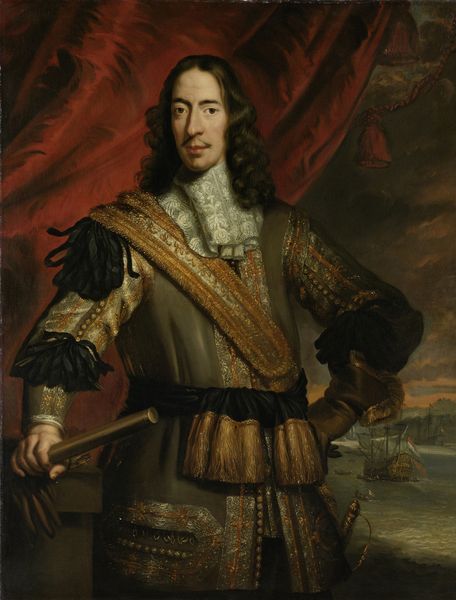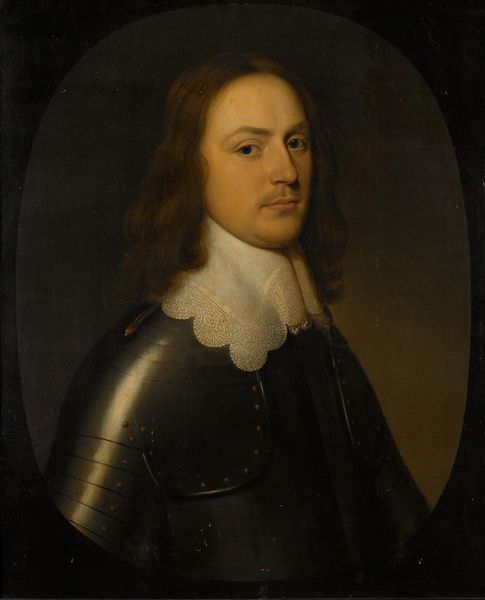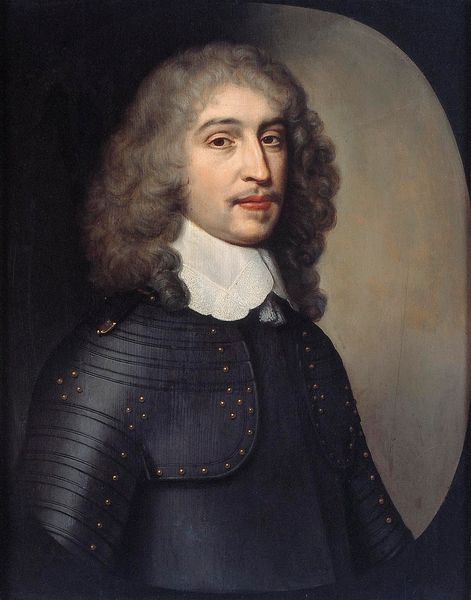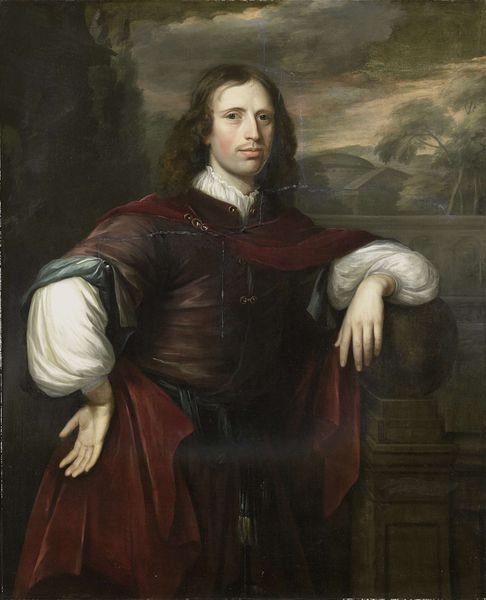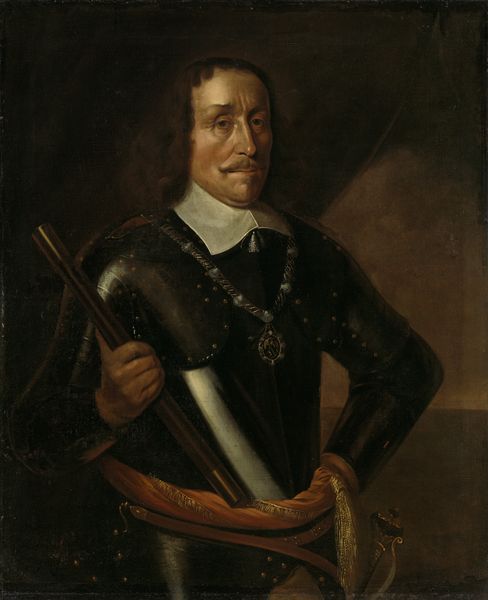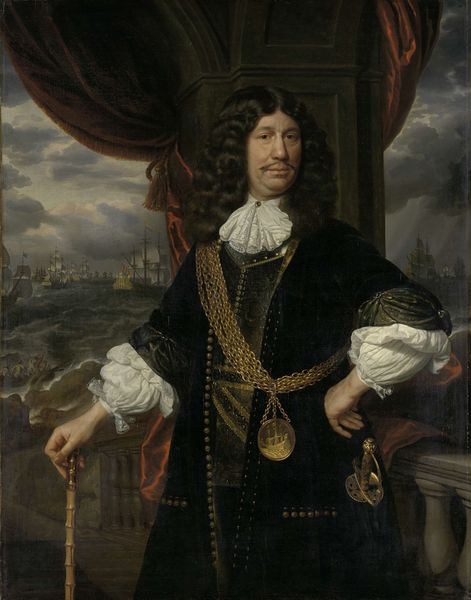
painting, oil-paint
#
portrait
#
baroque
#
portrait
#
painting
#
oil-paint
#
history-painting
#
academic-art
Copyright: Public domain
Curator: Here we have a portrait believed to be of Vice-Admiral Aert Van Nes, painted in 1667 by Ferdinand Bol. It's a classic example of Dutch Golden Age portraiture. Editor: It has such a striking calmness, doesn’t it? Even though it feels very much like a formal portrait, there’s something quite intimate about the gaze and stance. He’s authoritative, but also relaxed. Curator: Absolutely. Bol was working within a tradition where representing status was paramount. Notice the architectural element of the pillar behind him—it grounds him in the realm of stability and importance. These men were pillars of Dutch society during a period of great power. Editor: The sword, of course, also contributes to this, but look closer – the hilt isn’t prominently displayed; instead, the viewer's attention is brought to this incredible sash! That cinched waist definitely speaks of military preparedness but what about masculine allure as well? Curator: The sash is indeed wonderfully painted, all highlighted textures of interwoven cords. A bit of flair amongst the sobriety one usually expects in these commissions. His gaze too meets ours. In the social context, this direct engagement was significant – the man is literally showing that he sees you. He’s acknowledging the power dynamics at play. Editor: The gaze holds tremendous psychological weight! Bol knew what he was doing. Every fold and accessory speak of power – social and individual. These men were literally and figuratively dressed to convey status, both by themselves and by their culture. And speaking of "folds and accessories," what could that neckcloth and flowing, curled locks possibly be trying to communicate to the viewer? Curator: And the controlled environment where these portraits were displayed shaped the viewers reception of the portraits themselves. The works hung in the sitter's private residences or council meeting rooms: a carefully managed mise-en-scene! These paintings contributed towards bolstering cultural myths about mercantile competence. Editor: Exactly, myths made possible because visual iconography gave these "ordinary men" the look of deities, literally placed on pedestals for continuous veneration by family, staff and foreign envoys! A true performance. Curator: Ultimately, Bol captured more than just a likeness; he immortalized a powerful figure at a crucial moment in Dutch history, showcasing how art served to legitimize the elite. Editor: It’s incredible to see how symbols and visual cues in the work carry a significance even today, centuries later. A visual reminder of how carefully crafted the Dutch self-image could be.
Comments
No comments
Be the first to comment and join the conversation on the ultimate creative platform.
